You’ll Never Grow Weary – Me Time Izakaya Hopping Guide in Tokyo
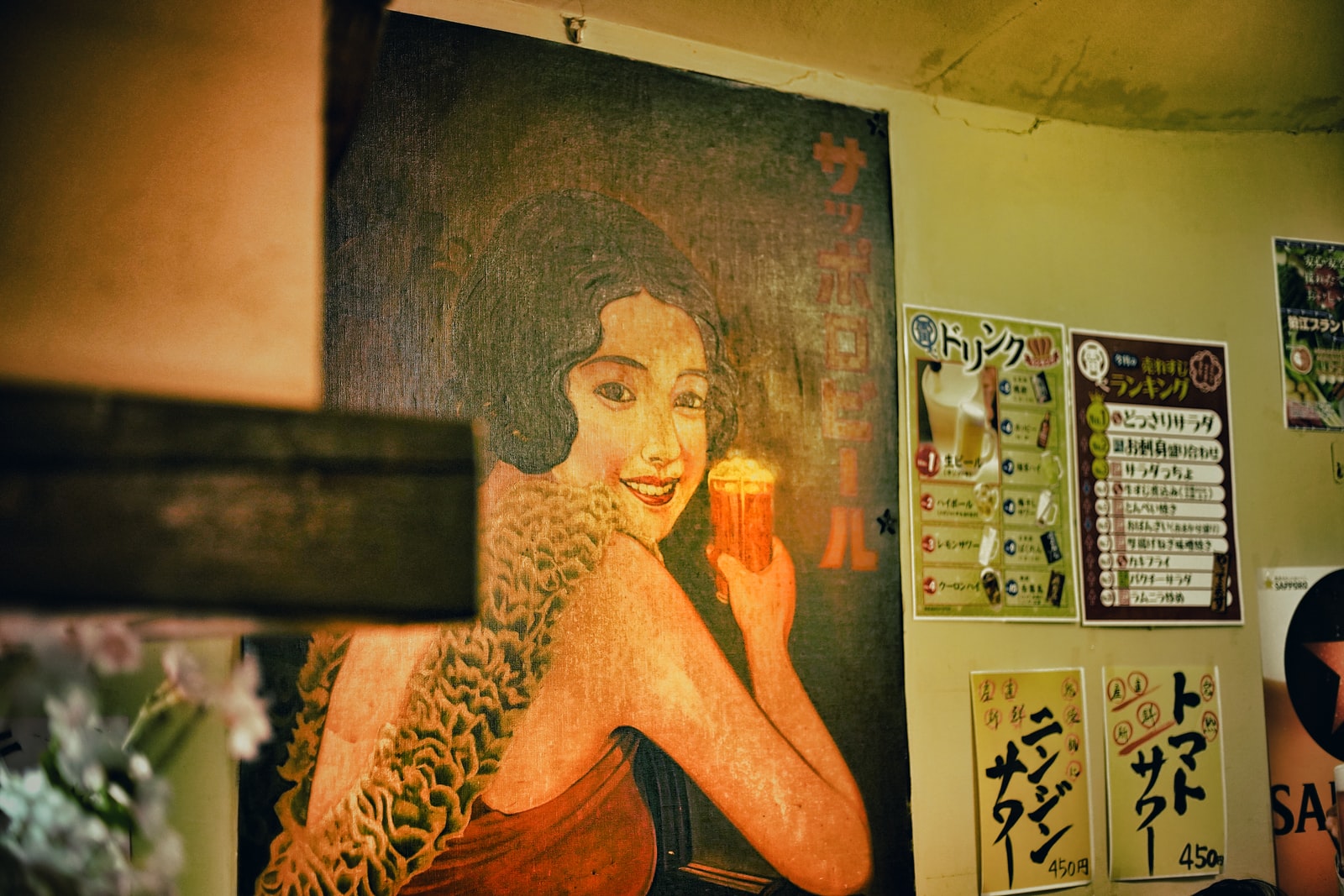
If you’ve always dreamed of traveling to Japan and can’t wait any longer for your friends to join you, Tokyo is a perfect place to jumpstart your solo travel adventures. You’ll never feel like a fish out of water among the other tourists that visit this food and drink culture hub each year. In addition, you will never weary of dining alone because the Japanese culture in Tokyo favors those who love to drink and eat alone! If you would like to enjoy a fun and non-intimidating solo night out, please head to our Tokyo favorites list below where you can enjoy a delicious dinner to relax, reflect and recharge. Izakaya is a type of Japanese bar in which a variety of small, typically inexpensive, dishes and snacks are served to accompany the alcoholic drinks, which is perfect as late-night grub.
Kanda area
Japan’s Oldest Izakaya – Mimasuya
People have various beliefs on where the oldest existing izakaya still in operation in Japan is located. We believe that Mimasuya is that izakaya, which opened in 1905. Mimasuya is located in Kanda Sudacho, where the majority of the building structures there survived WWll, maintaining the nostalgic atmosphere of old Tokyo. The beloved Mimasuya has a famous story where this popular izakaya during wartime caught on fire. In response, many of the regulars came to the rescue of the shop as they put down the fire by performing a traditional bucket relay and saving it from burning down. Since then Mimasuya continues to be one of the “go-to” izakaya places that neighbors, families, and Me Time diners flock to on a regular basis.
Mimasuya has so many delicious and traditional small bowl appetizers called Kobachi. These are considered to be Japanese-style tapas. They have well-known Japanese izakaya menu items such as Toro Sashimi (raw fatty tuna), Tofu (bean curd) dish, Kinpira (braised burdock root), etc. Our favorites here are Shirako Ponzu (cod milt), Tarako Nitsuke (cod roe in a strongly-flavored soy sauce), Sakura Sashimi (raw horse meat), and Gyu Nitsuke (sweet & spicy stewed beef and onion). On a historical note, Gyu Nitsuke considered a special dish in the old days because beef was a luxury item that not many people could eat. The first owner of the restaurant wanted many people to enjoy the dish, so he used to make lots of it, thus reducing the cost per serving. They still use the same traditional recipe since opening.

The popular shop normally requires reservations. Otherwise you’ll be waiting on long lines to get in. If you’re going to Mimasuya alone, request a seat at the big table in front of the kitchen which are considered Me Time seats where other solo customers enjoy their meals. This seating area is fun and enjoyable!
Edo-style Sweets & Vegetarian-friendly Sushi – Shinodazushi
Shinodazushi offers a top-notch version of sushi named Inarizushi and Kanpyo-maki which was first introduced in Japan during the Edo period in 1877. Inarizushi is made of seasoned deep-fried tofu which encases vinegared & sweetened sushi rice. Kanpyo-maki is a sushi roll made from dried seaweed & sushi rice. We consider these types of sushi as fast food since you can eat them with just one hand, and they are typically offered at a reasonable price.

Many people grab a box of sushi at Shinodazushi for a picnic or for a quick lunch designed for busy corporate people. If you would like to have a meal in the store, there’s a dining area in the basement. It may not your typical sushi, but it is surely delicious.
Ginza
The Fine Art of Cooking Tempura – Tenkuni Shiori
Tenkuni is a three-story tempura restaurant, that started its humble beginnings as a small street Tempura stall established in 1885 during the Edo era. Tenkuni’s traditional and elegant old Tokyo-style tempura uses fresh seafood only caught from Edo Bay (today’s Tokyo Bay).
Each floor serves tempura and different offerings that are unique settings for each of your specific occasions. On the first floor named Tenkuni, they serve reasonable Tendon (tempura rice bowl) and Teishoku (a set menu, that features a main course, rice, and soup). On the third floor named Yuuzutsu, you can enjoy authentic Japanese food in a private room which is usually reserved for special occasions or business meetings. Finally, the second floor called Shiori, is one of our favorite places to have tempura. This is “counter seat only” dining where you can view the delicate preparation and experience the fine art of cooking tempura, utilizing the finest sesame seed oil for the fresh fish and vegetables, coated in a very light and airy batter and fried to perfection. Tenkuni Shiori boasts both modern and traditional Japanese food elevated by fine Japanese hospitality.

Pescetarian Friendly & The One of Big Four Dining – Unagi Kiyokawa
There are four types of famous dishes in Edo when dining out, which is Sushi, Tempura, Soba noodles, and Unagi (eel fish)! These cuisines are the most popular in which these time-tested recipes and techniques were handed down from generation to generation.
In Nihonbashi district, there are a chock-full of Japanese traditional restaurants that still exist since the Edo period—Nihonbashi from Ginza is just five minutes away by taxi. Kiyokawa is a famous restaurant for Unagi. Its structure is a ninety-year-old traditional Japanese wooden house. You could easily pass by it if you didn’t know the store existed.
Kiyokawa’s charcoal-grilled eel coated in a blend of soy sauce, sugar, and Mirin (cooking wine) is a perfect pairing with Japanese sake or beer. The lunch Eel course menu comes with grilled eel, kimosui (eel-liver soup), Japanese pickles, rice, and dessert. Their famous liver soup, flavored with boiled Eel livers, is another must-have item if you enjoy this Unagi dish.
Shimbashi
Farewell Dinner for the Legendary Samurai’s Ritual Suicider – Suegen
Suegen is widely known as the place where Japan’s most famous novelist during the 1960’s, Yukio Mishima had his last dinner before he committed suicide by seppuku at an army base in Ichigaya, Tokyo the following day – November 25, 1970. That day, he gave a speech from a balcony to a thousand Japanese soldiers in which he berated the assembled servicemen for their submissiveness and challenged them to return the Emperor to his pre-war position as living god and national leader.
Many Japanese people come to Suegen because of this story today. The Mishima’s last supper menu was the Wa course, which has four different menus, ranging from 6 to 9 courses. All the courses include raw chicken & seafood sashimi and chicken hotpot. You can enjoy the tender and full-flavored chicken in many different styles and presentations.
In addition, many customers order the Oyakodon set (chicken and egg over rice) which stands out for using ground chicken meat with the fluffy egg in a dashi and soy sauce-based broth. The finishing touch is a mitsuba leaf on top. Some describe the dish as a delicious runny omelet on rice, as the ingredients mixture goes perfectly to give a silky texture and distinct taste. The traditional fine dining style called kappo serves Suegen specializing in chicken dishes which trace its back to the 1900’s.
Shibuya
Amazing Yakitori Open 24-hours and 365 Days – Yamaga
Shibuya is the best of Tokyo’s “Entertainment Districts” where inexpensive alcohol and food is served 24 hours a day. Everyone knows Yamaga if people spent some of their college experiences in Shibuya. And many adult customers also have been back to Yamaga since their undergraduate studies. Yamaga is located right near the Shibuya station. It is easy for a person to enter and fully enjoy a beer and yakitori for around 3000 yen (USD30). Shiso-maki (chicken and shiso leaf), Negima (chicken and scallion), Tsukune (chicken meatballs), and Asparagus-Bacon are must-have Yakitori which comes with four skewers except for Asparagus-Bacon for two skewers.
If you visit by yourself, order Torimori which is the assorted four skewers which has one each of the yakitori above. In addition, we always order Tebasaki (chicken wings), Hamukatsu (ham cutlet), and Motsuni (Tripe stew). This is a great place to spend your own Me Time dinner with a delicious menu having reasonable price points. It is not a bad idea to grab some snacks and beer there before you catch your train or taxi to get to your next destination.
Shinjuku
A Western-style Izakaya with Very Japanese Way – Donzoko
Donzoko is a hidden gem but is also a well-known place in Shinjuku. This izakaya place took its name from the title of Maxim Gorky’s play, The Lower Depths, which translates to Donzoko! When Donzoko opened in 1951, it had many historical Japanese cultural iconic regular customers such as the best known Japanese filmmaker in the West, Akira Kurosawa (1910 – 1998), and the famous novelist, Yukio Mishima (1924 – 1988). Even today, we have even seen some Hollywood stars hang out there too!

Some popular dishes there are Mixed Pizza (pizza with tomato sauce, mushroom, peppers and extra cheese), Kaki oil-zuke (vegetable marinade oysters), and Hayashi-san (beef and cabbage stir fry with Worcestershire sauce and rice). Try their signature Donzoko cocktail which is simply lemon, syrup, club soda, and shōchū (a Japanese distilled beverage).
Asakusa
A High Quality, Yet Very Affordable Sukiyaki Place – Yonekyu Honten
Yomekyu Honten serves a delicious beef hot pot called Sukiyaki since 1886, which is a tasty traditional Japanese dish. The main ingredients are beef, vegetables, tofu (bean curd), and a Sukiyaki sauce called Warishita which is made of sugar, mirin, and soy sauce. There are many popular sukiyaki restaurants in Tokyo, from high-end places to reasonably priced restaurants. Since sukiyaki is known as one of the country’s comfort foods for a long time, it has been became “must have” dish for travellers. Yonekyu Honten’s sukiyaki is sure to make your heart warm and satisfy your taste buds.

When you are in your hometown, you may tend to avoid the “touristy” restaurants, but Yonekyu Honten is certainly an exception to this rule. There are several famous Sukiyaki diners in Asakusa, but if your budget is somewhat limited, Yonekyu Honten is the one that can easily fulfill your appetite and keep your funds adequate. Everyone here can enjoy the traditional beef dish for just 35 USD a person! Their menu is strictly only Sukiyaki. Pick a generous potion of regular marbled beef or the special traditional Japanese Wagyu beef (highly marbled/fatty meat)—if you are with a group, order both menu items! Dip the cooked beef in the fresh raw egg which will ultimately melt in your mouth. Every single ingredient, such as mushrooms and tofu (bean curd), is carefully picked and cooked perfectly. It will be very crowded at lunchtime, so if you want to enjoy a drink and eat at your own tempo in a calm atmosphere, it’s best to come after 2 p.m.
A Great Little Spot to Enjoy Your Me Time – Oden Otafuku
If you enjoyed Midnight Diner on Netflix, a Japanese anthology TV series, you will love this place. For us, no visit to Asakusa is complete without stopping by this oden dinner destination named Otafuku. They have been serving oden for almost 100 years. Otafuku has been using the same signature broth for nearly 70 years, heating up the same batch of broth everyday, then adding more water—an aged soup stock is a common ingredient used in some Japanese old restaurants.
Otafuku is a great little spot to enjoy beer & hot Japanese sake, as well as oden. You can choose tasty oden items such as egg, tofu (bean curd), kombu (kelp), hanpen(white fishcakes), many different fishcakes, other seafood and other izakaya fares. Our favorites are fukubukuro (deep-fried tofu pouches stuffed with rice cake) and roll-kyabetsu (cabbage stuffed with ground meat). If you don’t know what to order, you pick what you want by just looking at items in the large steaming square bath behind the counter.
Here is our ideal izakaya-hopping routine in Asakusa area… first, meet up at Kamiya Bar after work; then have dinner at Komakata Dozeu; and make a final stop at Otafuku to have a drink and oden for a late night snack. See below for information on Kamiya Bar & Komakata Dozeu.
A Piece of Japanese Bar History – Kamiya Bar
Surely, Kamiya bar’s original owner Denbe Kamiya (1856-1922) could never have guessed that his bar would become a beacon of the Tokyo bar scene when he opened Mikahaya Meishu-ya in 1880 as the first bar in Japan. In 1912, Denbe renovated his store and changed its name to Kamiya Bar. It has a casual and traditional atmosphere, characteristic of Asakusa which is known as the traditional downtown Tokyo.
The famous drink here is Denki Bran (Electric Brandy) which is a sweet blend of wine, gin, and brandy that’s not so electrically shocking as it sounds! The drink had a good scent and is quite powerful. Many Japanese famous authors were regulars at Kamiya Bar in the old days, including Osamu Dazai. Denki Bran appeared in his famous novel Ningen Sikkaku (No More Human). The main character in the novel said, “there is nothing like Denki Bran that causes me to get easily tipsy”. It seems that Denki Bran, back in the day, had a much higher alcohol content than it is now. And if you like Japanese Anime, you might remember a generic version of Denki Bran appears in Morimi Tomihiko’s Night is a Short, Walk on Girl (Yoru wa mijikashi Arukeyo Otome). Enjoy your time there reminiscing about stories and memories of the bar from long past.
Dining in Like Edo Locals, a Very Traditional Hotpot Destination – Komakata Dozeu
Komakata Dozeu is a long-established loach fish restaurant. It has been operating in the same location more than 200-years. Dozeu is loach fish, in Japanese. In the old days, Dozeu was an important affordable and nutritious food for the Japanese while many did not have the means to eat much meat. In the present modern days, even though Japanese are obsessed with meats, people continue to have Dozeu in season, from spring to summer.
The signature dish Dozeu Nabe (hotpot of loahes) contains many loaches infused with Japanese Sake and a soy sauce-based bonito soup stock. Before you take your first taste, feel free to pile on as much sliced green onions as you feel appropriate. The Dozeu will be melt-in-your-mouth soft and flavorful. The loaches are very tender which contains so much Umami and are rich in a myriad of flavors. If you like eggs, order Yanagawa Nabe (loaches covered in fluffy egg), which is using same soup stock as Dozeu Nabe but with additional burdock root, and is finished off with a covering layer of egg.

In this two-story and one basement restaurant, we recommend dining in the large tatami room on the ground floor, which is the most authentic way that you could enjoy the simplicity & quality of authentic Edo food. They don’t take any reservations, and thus, sometimes you may have to wait for a table… be patient as it is definitely worth the wait!

A Fish Sukiyaki – Dozeu Iidaya
Another fine Dozeu restaurant is Dozeu Iidaya, which boasts about its delicious menu since 1903. The restaurant is perfect for Me Time lovers, because the place has a quiet & cozy atmosphere, along with its friendly and efficient service. You can experience Omotenashi, the Japanese way of serving customers.
Iidaya also serves Dozeu nabe and Yanagawa Nabe, besides popular menu items like Dozeu Kabayaki (grilled loach with sweet sauce, which is similar to Teriyaki sauce); Unagi Kabayaki (grilled eel with sweet sauce); and Unagi Tororo (eel with grated yam). For a side dish, Dozeu karaage (Fried loaches, which is similar to fried anchovies) is a great healthy snack that goes best with beer or Japanese Sake. Grilled fish, accompanied with a homemade thick, sweet, and savory sauce, are perfect match!
Ueno
Essential for Dinner, Fancy Kaiseki-Style Meals – Innsyoutei
While you visit Ueno Park, visit this great restaurant located at the center of park. Innsyotei atmosphere feels like a chic zen-modern treehouse which dates back to 1875. Here you should try a traditional Japanese meal called Kaiseki, which is a multi-course Japanese food experience made up of beautifully plated dishes. While kaiseki meals can vary, Innsyoutei’s Kaiseki mainly consists of seasonal fresh vegetables as well as soybeans, accompanied with fish & meat rich in Umami. In addition, another popular dish is a Japanese hot pot with a chicken called Chicken Sukiyaki which uses fatty chicken, watercress, onion, tofu & Yuba (tofu skin) simmered in a sweet sauce. And the end of this hot pot meal, the staff makes a Japanese rice porridge called Zosui at your table. Enjoy the remaining flavorful broth with rice. Reservations are essential for dinner.
Discover a Timeless and Favorite Traditional Food, Crispy & Fluffy Fried Fish – Dote no Iseya
Earthquakes have always been a part of Japan. With urbanization, old buildings are being demolished, while new ones are being built. Thus, it makes it extremely rare to find a long-established store like Iseya which was founded during the Edo period, that has been in business at the very same location. Iseya has been serving customers since 1889. It has both a casual feel and a traditional atmosphere which is characteristic of old Tokyo. Iseya’s owner says the technique of tempura is quite complex. It takes at least 5 years to master all the cooking processes. Iseya has inherited the art of making tempura from generation to generation since its establishment, keeping the traditional taste and expertise alive.
Things to order there are Anago (sea eel) tempura. At the restaurant there is a big fish tank of eels, and the fourth generation owner-chef takes those eel’s from the tank and then perfectly prepares them every morning. A Tendon Rice Bowl comes with large portions of Anago, squid, and prawns. These seafood fritters are extremely light, crispy, and fluffy, and paired with a special tempura sauce drizzle.

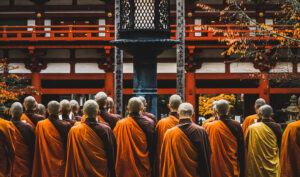
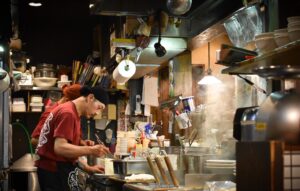
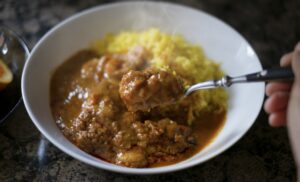
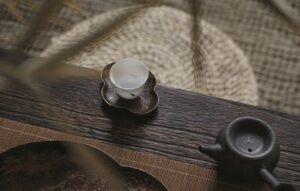


 Instagram
Instagram